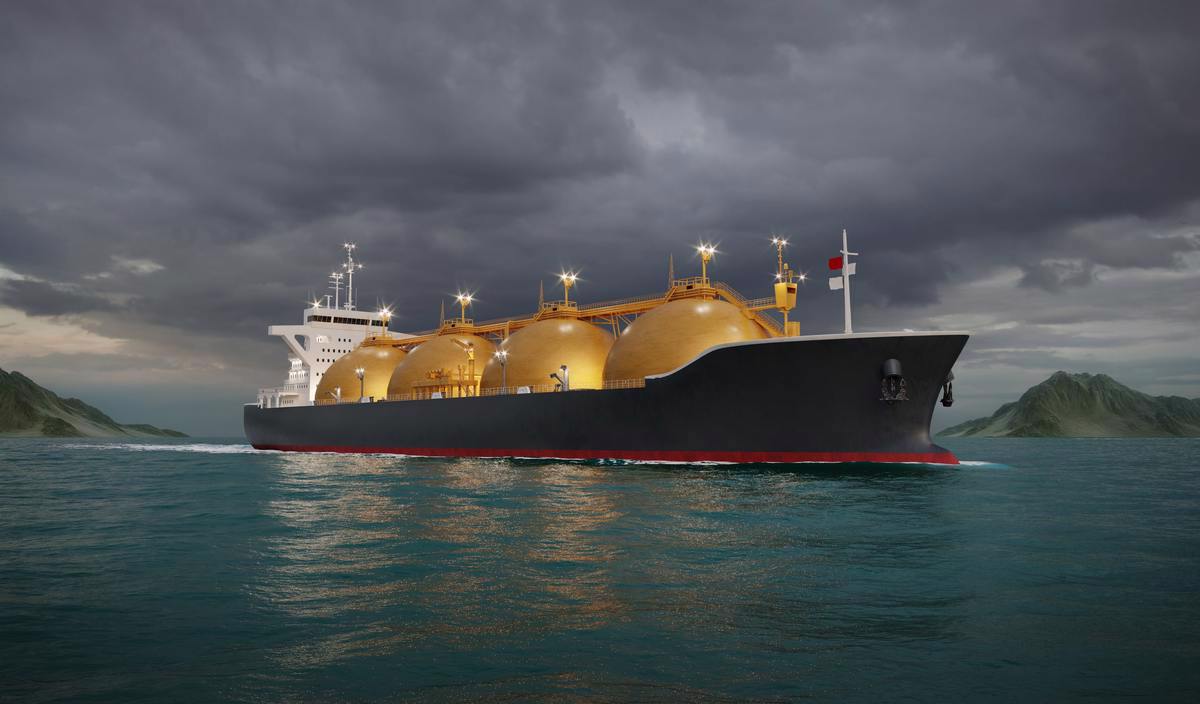LNG-fuelled ships emit more methane than previously estimated - ICCT
LNG-fuelled vessels have been touted as greener alternatives to those running on traditional oil-based fuels, but a new study finds that many of these vessels produce more methane emissions than what current regulations assume, raising concerns about their overall impact on the environment.
 PHOTO: LNG carrier vessel. Getty Images
PHOTO: LNG carrier vessel. Getty Images
According to the study, the plumes of 18 ships that use the most common type of LNG marine engine - low-pressure dual-fuel (LPDF) 4-stroke - showed an average of 6.4% methane slip in real-world measurements. This is higher than the 3.1% assumed in EU regulations and the 3.5% assumed by the International Maritime Organization (IMO).
"From the plume campaign, we conclude that low-pressure, dual-fuel, four-stroke (LPDF 4-stroke) engines, on average, emit more than twice as much methane slip than assumed by the EU and over 80% more than assumed by the IMO," the study found.
LPDF 4-stroke is the most common LNG-fuelled engine type measured by numbers of ships, gross tonnage, installed power and fuel consumption, the study found, citing data from IHS Markit and the EU. Ships with LPDF 4-stroke engines doubled their LNG consumption from 2018, to 1.84 million mt in 2022.
The study authors recommend that policymakers in the EU and IMO consider raising the default methane slip value for LPDF 4-stroke engines to a minimum of 6%.
“If methane slip assumptions remain too low, shipowners will be able to use LNG in high-methane-slip engines longer, effectively getting an unfair advantage over lower-emitting fuels and engines,” lead author and director of the marine programme at the International Council on Clean Transportation (ICCT), Dr Bryan Comer said.
Fugitive and unburned
The study was produced through the Fugitive and Unburned Methane Emissions from Ships (FUMES) project, which collected data on methane emissions from LNG-fuelled ships. FUMES is a collaboration between the ICCT, Danish emissions monitoring firm Explicit and the Netherlands Organization for Applied Scientific Research (TNO).
It focuses on real-world methane emissions, and specifically on methane slip from marine engines and from unloading LNG cargo. Onboard methane slip refers to the amount of unburned methane that escapes into the atmosphere from the engine. Since LNG is mainly made up of methane, unburned LNG contributes to methane emissions.
"We used drones, helicopters, and in-stack measurements to characterize real-world methane emissions from LNG-fueled ships in Europe and Australia. The FUMES report contains the most comprehensive dataset of real-world methane emissions from LNG-fueled ships ever," Comer said.
The findings of the study show that while LNG may be a cleaner alternative to traditional oil-based marine fuels in terms of CO2, sulphur oxides (SOx) and nitrogen oxides (NOx), it is not a silver bullet to addressing climate change.
Manage the methane
Ships that use LNG as fuel should be required to eliminate their emissions while they are in port by plugging into shore power or through other abatement measures, the ICCT recommends.
It also argues for methane emissions from LNG storage and refuelling points to be monitored, reported and verified.
And because lower engine loads tend to have higher methane and NOx emissions, the IMO should stipulate that emissions should also be tested at 10% engine load during engine certication tests.
By Debarati Bhattacharjee
Please get in touch with comments or additional info to news@engine.online





